Why RFID Access Control on a Jobsite is More Important Than You Think
Introduction
A construction jobsite is a perfect example of where RFID technology is used in countless applications. Jobsites are able to use a variety of RFID frequencies in applications to ensure security and to automate previously manual processes. Some examples include:
- Locating long range, or hard to find items with active RFID.
- Opening secure doors or enabling machinery access with HF/NFC RFID.
- Opening vehicle access gates with UHF RFID.
In order to get the most out of RFID, managers on a jobsite must understand all processes in the location. Security measures are extremely important in avoiding lawsuits, fraud, and lost or stolen equipment, while automating manual process can help to scale the operation and cut costs. Below are five examples of how RFID access control is being used on jobsites.
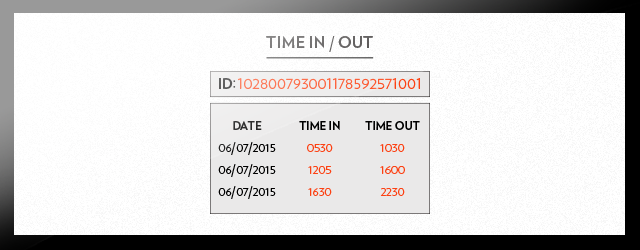
Employee Time Management
HF/NFC employee badges have multiple uses on a jobsite. One application for these badges is using them to record employee hours. When an employee walks by the reader, the badge is scanned and his/her status can be updated in the system and recorded on an electronic time card. This time card can be either compared to an employee’s logged hours or be the sole record for employee time management. If each read is stored and used alone as an employee’s time sheet for the week, there would be no need for each employee to log time.
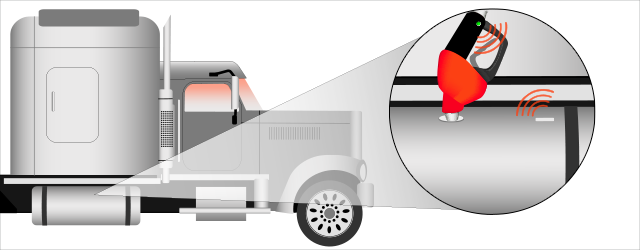
Fueling Jobsite Vehicles
Fueling stations can be targeted areas for fraud on jobsites due to lack of security. The fuel onsite is paid for by the construction company for authorized vehicles. Each month, these companies are seeing increased depletion of fuel that cannot be attributed to normal use. The disappearance of fuel on jobsites is mainly due to people (with or without access) filling up non-company cars with company fuel. In order to reduce this loss, RFID readers on fuel pumps and RFID tags on vehicles can keep detailed records of how much fuel is pumped into each vehicle. These pumps can also be programmed with software to only pump fuel when an authorized RFID vehicle tag is read. This will keep unauthorized vehicles from using company fuel.
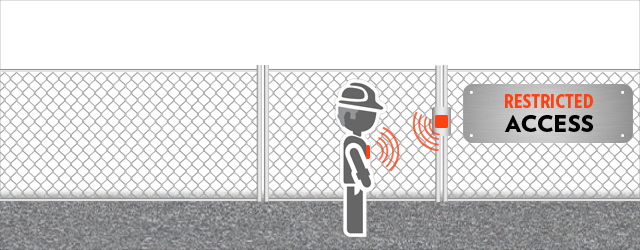
People and Vehicle Restricted Access Control
On jobsites multiple levels of security clearance mandated in certain areas help decrease the probability of lost or stolen equipment and information. These clearance levels can be programmed on NFC/HF badges so only authorized personnel are able to access high-security areas. Additional security measures can be put in place such as fingerprint scanners or coded PIN pads to enhance security and deter theft.
These same measures can be put in place at a security gate for vehicle admittance. Vehicle access control uses UHF RFID instead of NFC/HF, but clearance levels can also be programmed on Windshield tags or Rearview Mirror tags in order to create a secure vehicle lot.
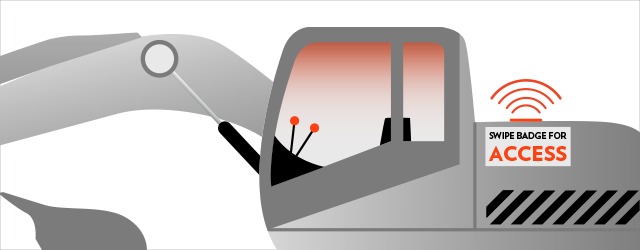
Machine Safety with Personnel Admittance Control
Different types of machinery are found throughout jobsites and can be extremely high-cost assets. Even though this machinery is an incredible advantage in the field, it can also be a liability for the company. If ill-trained employees operate complex machinery and get hurt in the process, the company could be looking at a large lawsuit.
Adding an RFID access control system to machinery can limit the ability to operate to only pre-cleared employees. These clearance levels can be programmed on employee RFID badges and read upon entry to each piece of machinery. Entry and exit logs can also be stored on a database for use if any problems arise.
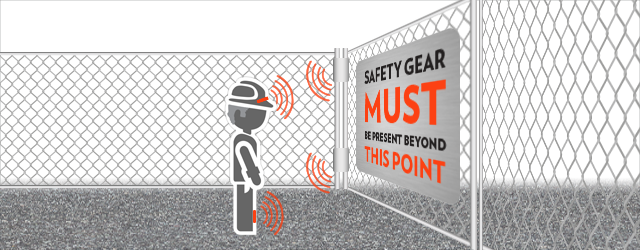
Safety Gear and Precautions
Affixing RFID tags on required safety gear forces employees to comply with regulated safety standards. RFID Readers at entry points of safety zones read the tags adhered to the employee’s safety gear diminishing company liability. In this case, there will be quite a few tag reads per individual, which might require more than one reader on each entry point.
RFID can be a critical player on a jobsite in access control applications, as well as other applications such as tool tracking, asset tracking, and inventory management. Each instance of RFID on a jobsite will require an extensive testing process because of environmental and multipath factors.
Conclusion
If you want to learn more about access control, read our Buyer’s Guide to Access Control, post a comment below, or contact us for more information.
If you would like to learn more about all things RFID, check out our website or our YouTube channel.
To learn more about access control RFID applications, check out the links below!

